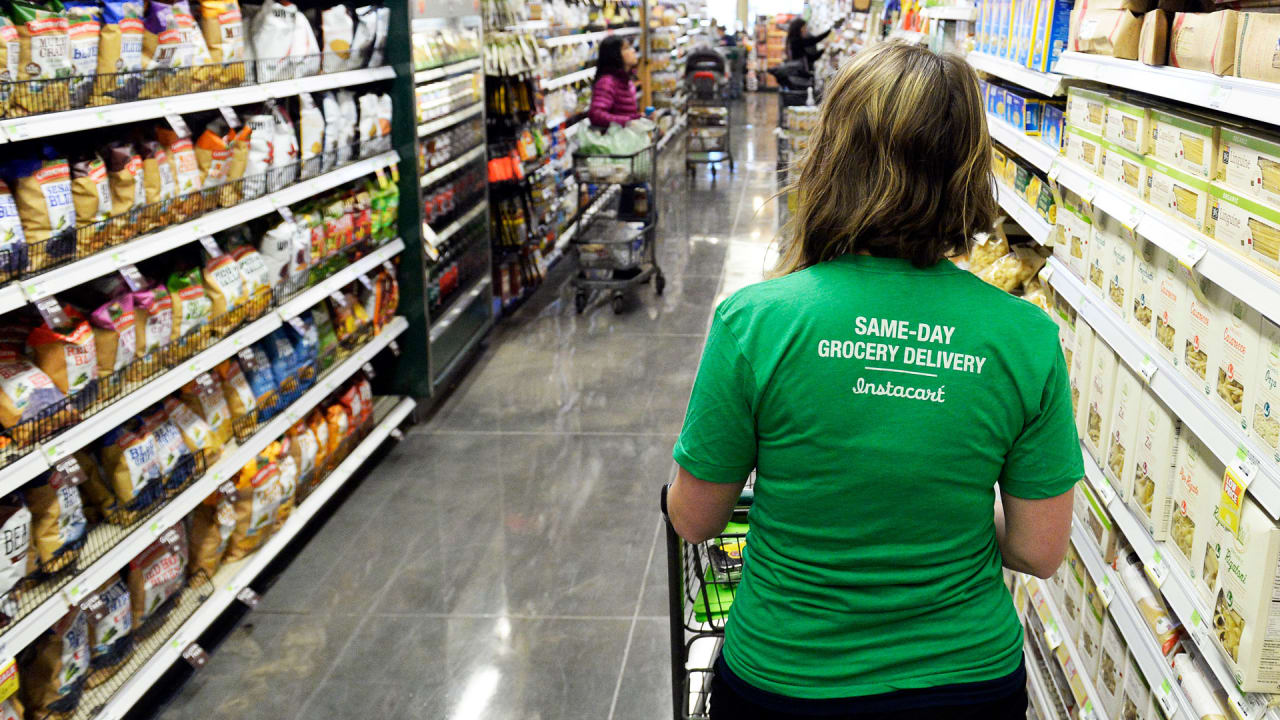

But avoiding them is difficult because it’s Instacart, not shoppers, that decides whether to aggregate orders, and with store access at a premium, the company has been bundling them more frequently. Some shoppers, such as Dina, avoid doing double- or triple-order batches because the logistics are too complicated, “and then the pay doesn’t add up,” she said. Though some policies guarantee workers a minimum payment for each “full-service batch,” receipts show Instacart pays shoppers who complete multiple orders in one batch the same amount or just above what they are paid for a single order.
#Instant cart drivers
Instacart shoppers can choose from two kinds of orders: delivery only, meaning drivers pick up bags of groceries collected by someone else, and full service, which requires both shopping and delivery.

“In the last four weeks, Instacart has introduced more than 15 new product features, new health guidelines, new shopper bonuses, new sick leave policies and new safety supplies, as well as pay for those affected by COVID-19,” Montalvo said. While Instacart still pays workers for those orders, they lose out on the tip, which often represents the majority of the total.Ĭompany spokesperson Natalia Montalvo said Instacart shopper earnings increased 40% from February to March and tips have gone up 30%. Customers are able to cancel orders right up until delivery. But, that applies only to the first 50 pounds. If an order includes unusually heavy items, shoppers receive about $10 in extra pay. That component, which often makes up more than half of the pre-tip total, doesn’t reflect the size of the order or the time spent shopping, both of which have gone up dramatically since the arrival of the pandemic. A large part of shoppers’ pay is a 60-cent-per-mile fee for the distance driven between the store and the customer’s home. Interviews with five drivers and documents that The Times reviewed reveal company policies that all but ensure extra demand doesn’t translate into higher pay for workers.Īmong those policies is Instacart’s compensation model. Navigating the wraparound lines and picked-over aisles of overtaxed supermarkets while balancing pandemic protocols, Instacart’s shoppers and drivers say they are risking their health and working longer hours than ever before, with little to show for it. In fact, the company said it has seen an unprecedented number of grocery orders in the last few weeks.įor the people tasked with fulfilling those orders, that surge of demand has exacerbated long-standing stresses in their jobs and bolstered a critique that Instacart systematically exploits them with confusing, opaque and ever-changing practices. The protest hasn’t made a dent in Instacart’s business. Since March 30, a contingent of Instacart workers across the country has been on strike over demands including hazard pay, protective gear and easier access to paid sick leave. “It’s almost like you’re volunteering your time,” she said.
#Instant cart plus
In the end, after about five hours of shopping and driving, Dina received $29.60, including tips, plus some of the groceries from the canceled order. 2, peeved at the long wait and unavailable items, had canceled the order. On her way there, she got a notification: Customer No. Three hours of shopping later, she loaded 20 bags of groceries into her car and drove to the first customer’s home. All the while, Dina was in constant communication with the three customers about what was unavailable and what they wanted instead. Dina queued for more than 20 minutes at the deli, then again at the seafood counter. Some items were nearly sold out others carried limits on how many a customer could purchase at a time. With shoppers in Delaware frantically preparing to hunker down in their homes, lines at the grocery store spanned the length of the building. Only $17 of that was to be from Instacart, the rest in tips. But on that day, with few other choices, she accepted a triple order that promised take-home pay of $48. Before the coronavirus outbreak, Dina could easily avoid doing the labor-intensive orders that required her to shop for and deliver groceries to two or three customers at a time. did her last job for Instacart on March 20.


 0 kommentar(er)
0 kommentar(er)
